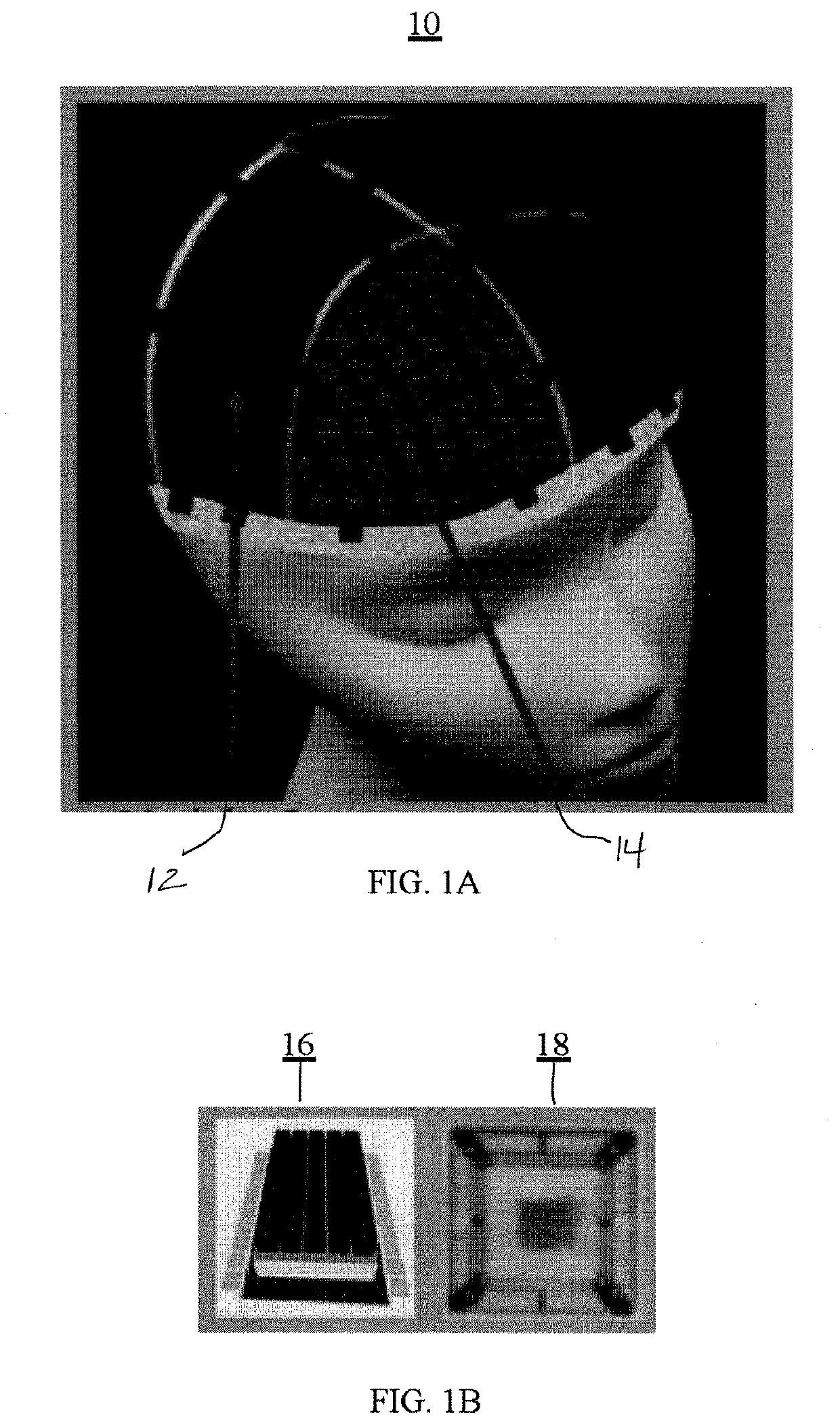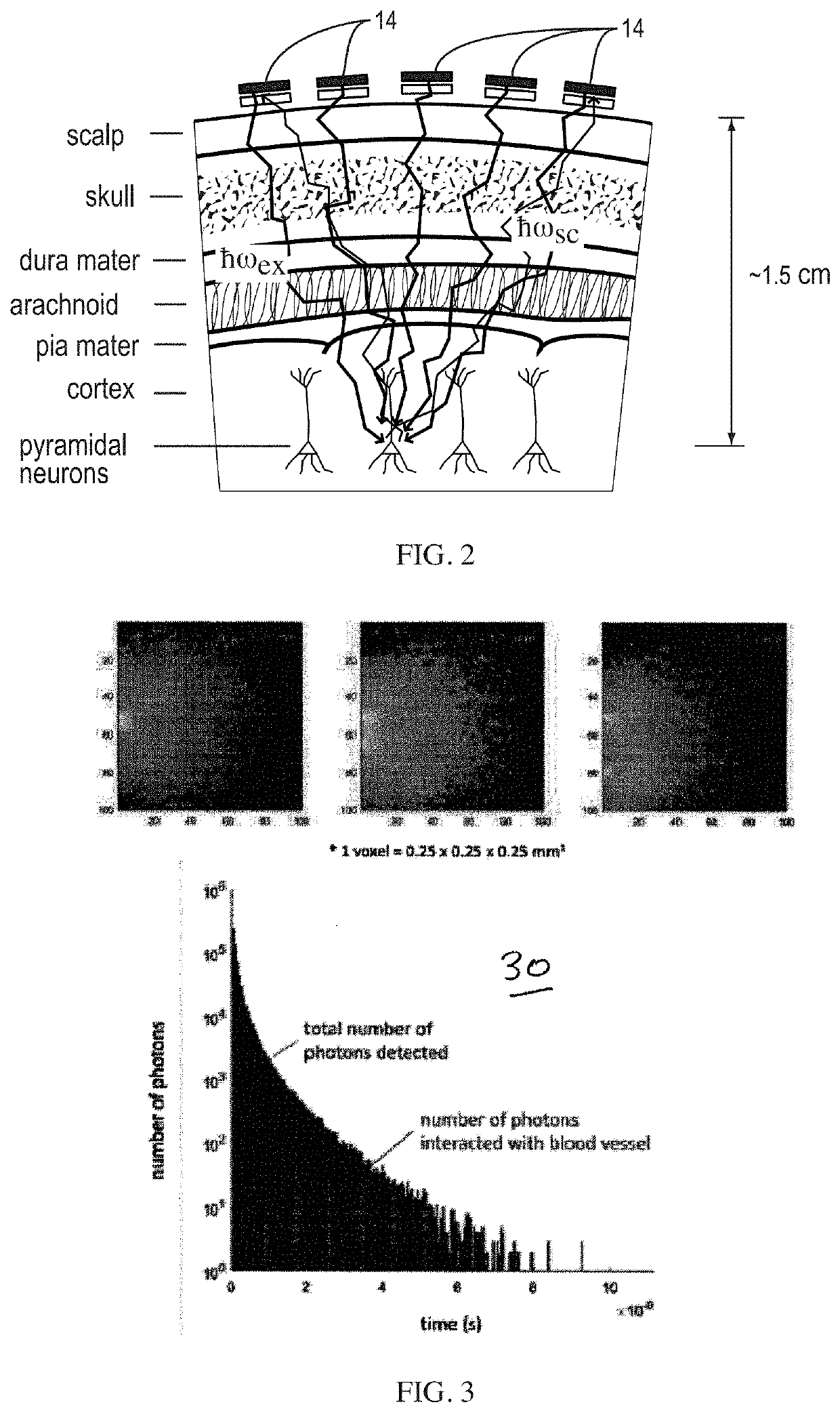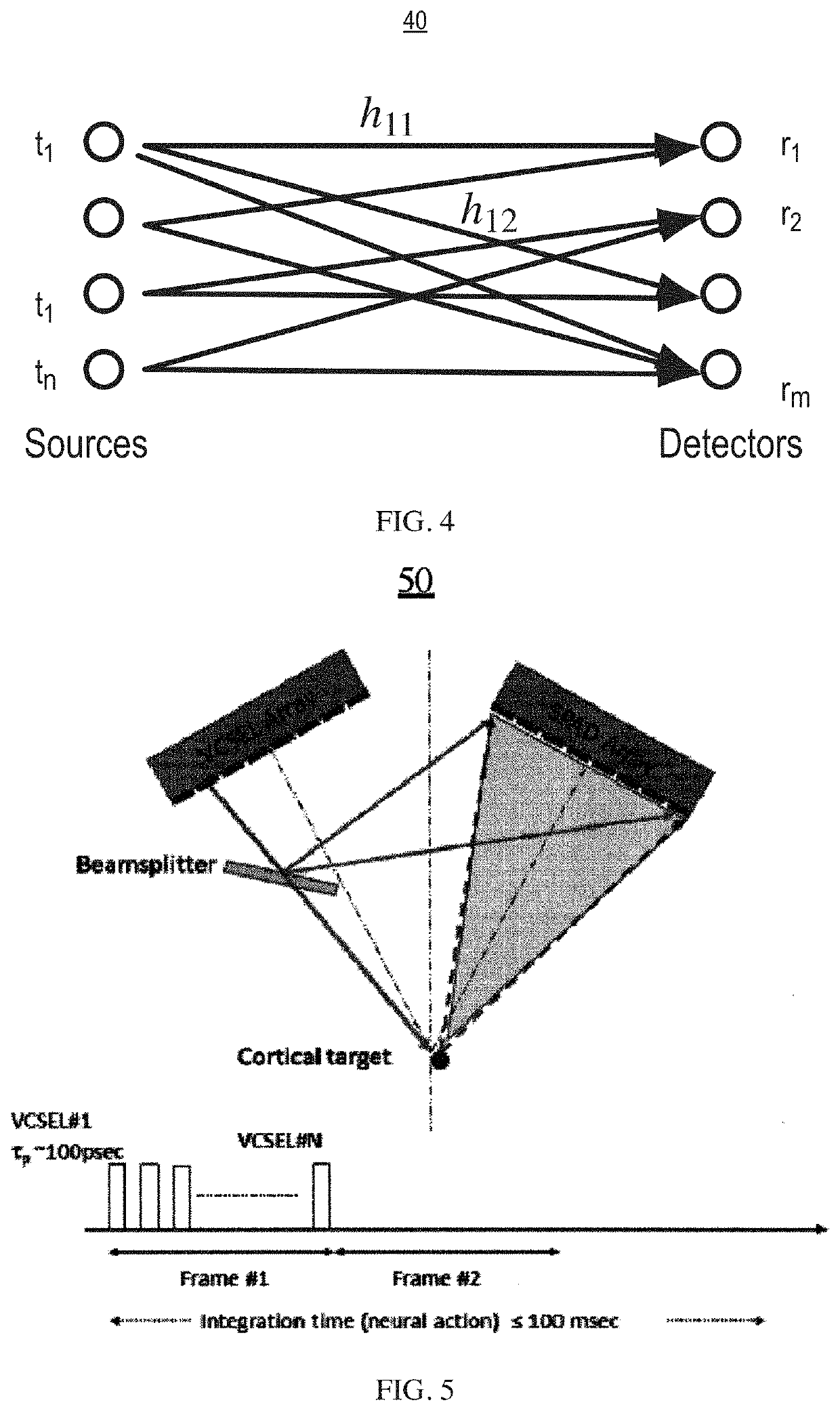High spatiotemporal resolution brain imaging
a spatiotemporal resolution, brain imaging technology, applied in the field of brain imaging, to achieve the effect of chromophore quantification capabilities, enhanced spatial resolution, and sensitivity/depth penetration
- Summary
- Abstract
- Description
- Claims
- Application Information
AI Technical Summary
Benefits of technology
Problems solved by technology
Method used
Image
Examples
Embodiment Construction
[0026]The subject innovation is now described with reference to the drawings, wherein like reference numerals are used to refer to like elements throughout. In the following description, for purposes of explanation, numerous specific details are set forth in order to provide a thorough understanding of the present invention. It may be evident, however, that the present invention may be practiced without these specific details. In other instances, well-known structures and devices are shown in block diagram form in order to facilitate describing the present invention.
[0027]Because human tissue is sufficiently transparent to near-infrared (NIR) wavelengths (650-950 nm), near-infrared spectroscopy (NIRS) can be used to non-invasively monitor brain oxygenation and perfusion. NIR light is non-ionizing and does not harm biological tissue at the 1-4 mW / cm2 average power densities customarily utilized. Moreover, NIR wavelengths are easily achieved using semiconductor laser diodes. By using ...
PUM
 Login to View More
Login to View More Abstract
Description
Claims
Application Information
 Login to View More
Login to View More - R&D
- Intellectual Property
- Life Sciences
- Materials
- Tech Scout
- Unparalleled Data Quality
- Higher Quality Content
- 60% Fewer Hallucinations
Browse by: Latest US Patents, China's latest patents, Technical Efficacy Thesaurus, Application Domain, Technology Topic, Popular Technical Reports.
© 2025 PatSnap. All rights reserved.Legal|Privacy policy|Modern Slavery Act Transparency Statement|Sitemap|About US| Contact US: help@patsnap.com



